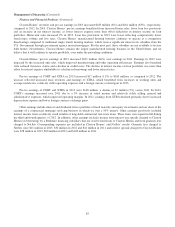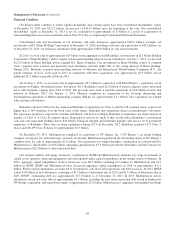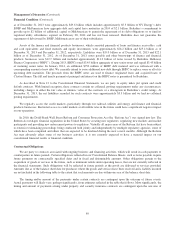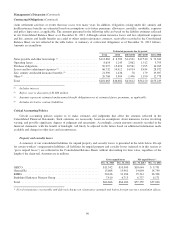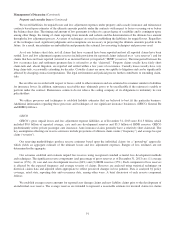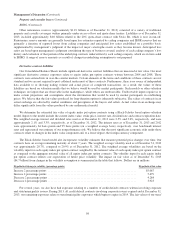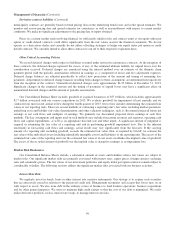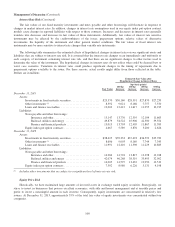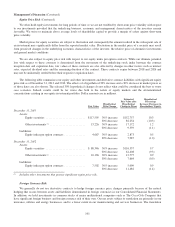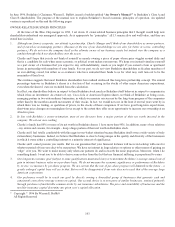Berkshire Hathaway 2013 Annual Report Download - page 96
Download and view the complete annual report
Please find page 96 of the 2013 Berkshire Hathaway annual report below. You can navigate through the pages in the report by either clicking on the pages listed below, or by using the keyword search tool below to find specific information within the annual report.
Management’s Discussion (Continued)
Property and casualty losses (Continued)
General Re and BHRG (Continued)
and the appropriate client personnel or through independent outside counsel. If disputes cannot be resolved, our contracts
generally specify whether arbitration, litigation, or an alternative dispute resolution process will be invoked. There are no
coverage disputes at this time for which an adverse resolution would likely have a material impact on our consolidated results of
operations or financial condition.
General Re
General Re’s gross and net unpaid losses and loss adjustment expenses and gross reserves by major line of business as of
December 31, 2013 are summarized below. Amounts are in millions.
Type Line of business
Reported case reserves ........................ $ 7,809 Workers’ compensation (1) .................... $ 2,830
IBNR reserves ............................... 7,859 Mass tort-asbestos/environmental .............. 1,539
Gross reserves ............................... 15,668 Auto liability .............................. 3,769
Ceded reserves and deferred charges ............. (1,004) Other casualty (2) ........................... 2,288
Net reserves ................................. $14,664 Other general liability ....................... 2,462
Property .................................. 2,780
Total .................................... $15,668
(1) Net of discounts of $1,866 million.
(2) Includes directors and officers, errors and omissions, medical malpractice and umbrella coverage.
General Re’s loss reserve estimation process is based upon a ground-up approach, beginning with case estimates and
supplemented by additional case reserves (“ACRs”) and IBNR reserves. The critical processes in establishing loss reserves
involve the establishment of ACRs by claim examiners, the determination of expected ultimate loss ratios which drive IBNR
reserve amounts and the comparison of case reserve reporting trends to the expected loss reporting patterns. Recorded reserve
amounts are subject to “tail risk” where reported losses develop beyond the maximum expected loss emergence time period.
We do not routinely determine loss reserve ranges. We believe that the techniques necessary to make such determinations
have not sufficiently developed and that the myriad of assumptions required render such resulting ranges to be unreliable. In
addition, claim counts or average amounts per claim are not utilized because clients do not consistently provide reliable data in
sufficient detail.
Upon notification of a reinsurance claim from a ceding company, our claim examiners make independent evaluations of
loss amounts. In some cases, examiners’ estimates differ from amounts reported by ceding companies. If the examiners’
estimates are significantly greater than the ceding company’s estimates, the claims are further investigated. If deemed
appropriate, ACRs are established above the amount reported by the ceding company. As of December 31, 2013, ACRs
aggregated approximately $2.2 billion before discounts and were concentrated in workers’ compensation reserves, and to a
lesser extent in professional liability reserves. Our examiners also periodically conduct detailed claim reviews of individual
clients and case reserves are often increased as a result. In 2013, we conducted 266 claim reviews.
Our actuaries classify all loss and premium data into segments (“reserve cells”) primarily based on product (e.g., treaty,
facultative and program) and line of business (e.g., auto liability, property, etc.). For each reserve cell, premiums and losses are
94



